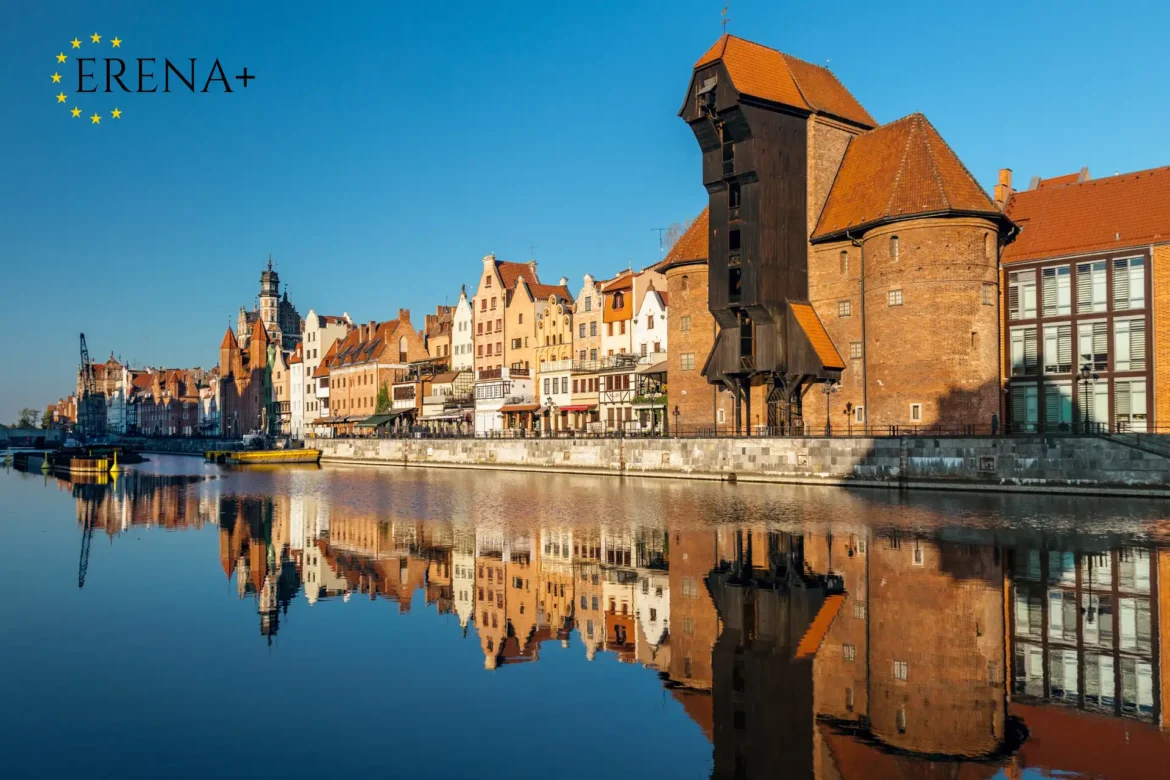The real estate market in Gdańsk, one of Poland’s largest port cities, continues to evolve, reflecting both European and local trends. This development is accompanied by rising property prices, increasing demand, and growing interest from foreign investors. With its economic potential, historical appeal, and advantageous location, Gdańsk has become one of the leading cities on Poland’s real estate map.
General Market Overview
As of the end of 2023, Gdańsk shows steady growth in housing prices. The average price per square meter in the city, as well as in neighboring Gdynia and Sopot, has reached 14,288 PLN (approximately €3,225). This marks a 5% increase compared to the previous month, confirming an upward trend in the real estate market. The secondary market has also demonstrated positive dynamics, with an average price of 14,570 PLN (€3,290) per square meter.
This growth is not coincidental but is driven by several factors that enhance the appeal of the region’s real estate to both local residents and foreign buyers.
Key Drivers of Price Growth
Economic Development in the Region
Gdańsk is a vital industrial and economic hub in Poland. The development of industries such as shipbuilding, petrochemicals, and food processing, along with the emergence of high-tech companies, contributes to job creation. This attracts skilled professionals who seek housing in well-developed neighborhoods. Modern office spaces, technology parks, and research centers further boost interest in the city’s real estate.
Tourism Potential
Gdańsk is renowned for its cultural heritage, historical landmarks, and beautiful beaches. Millions of tourists visit the city annually, stimulating the short-term rental market. Property owners take advantage of this opportunity by renting out apartments to travelers, enhancing the city’s appeal for investors seeking stable income.
Demographic Changes
Population growth, driven by migration, significantly impacts the real estate market. Gdańsk is becoming attractive to residents from other Polish regions and neighboring countries such as Ukraine and Belarus. This increases demand for rental and purchase properties, especially in the affordable segments of the market.
Variations in Housing Costs by District
Property prices in Gdańsk vary depending on the district, its infrastructure, distance from the city center, and proximity to the sea. Below are some of the most popular areas:
- Przymorze: This district attracts buyers with its proximity to the sea, good transport connections, and well-developed infrastructure. The average cost of housing here ranges from 9,500 to 15,000 PLN per square meter. It is particularly appealing for those seeking comfortable housing with a sea view.
- Oliwa: Known for its historical charm and green spaces, this area is popular for smaller apartments. For example, a two-room apartment of 37 m² costs approximately 441,000 PLN (around 11,900 PLN per square meter).
- Wrzeszcz: Combining historical architecture with modern buildings, this district is home to young professionals who value proximity to the city center and good infrastructure. The price per square meter ranges from 9,500 to 15,000 PLN.
- Brzeźno: Located near the beach, this district is especially popular among investors looking to rent out properties. The primary market in this area is limited, with prices starting at 8,000 PLN per square meter.
Investment Opportunities
Gdańsk is becoming one of the most attractive Polish cities for real estate investments. The high demand for rentals, especially in tourist-heavy areas, ensures stable income for property owners. The average rental yield in major Polish cities, including Gdańsk, is about 7% per year, making such investments highly profitable.
Additionally, the long-term rise in property values offers investors the opportunity to grow their capital. Finally, investing in Polish real estate allows for portfolio diversification, reducing risks associated with economic conditions in other countries.
Buying Property as a Foreigner
Poland’s laws regarding foreign property purchases are quite lenient. Citizens of other countries can freely purchase apartments. However, buying houses with land plots requires special permission from the Ministry of Internal Affairs. This is especially relevant for coastal and border zones, where any property acquisition by foreigners requires additional approvals.
For most investors from European countries, as well as Ukraine and Belarus, buying real estate in Gdańsk is a convenient way to invest in a growing market.
Forecasts and Prospects
Experts predict that the Gdańsk real estate market will continue to grow in the coming years. The region’s economic development, steady population growth, and limited supply in popular districts will sustain high demand. Foreign investors are expected to remain interested, especially those looking at property as a means of earning passive rental income.
However, it’s important to note that price growth could be tempered by macroeconomic factors such as inflation, changes in mortgage interest rates, and the overall state of the economy. Nevertheless, Gdańsk remains one of the most dynamic points on Poland’s real estate map.
Conclusion
The Gdańsk real estate market continues to show positive dynamics, supported by strong economic and social factors. This makes the city attractive to both local residents and foreign investors. Potential buyers should consider the characteristics of each district, current trends, and legislative aspects to make the most advantageous investment decisions.

